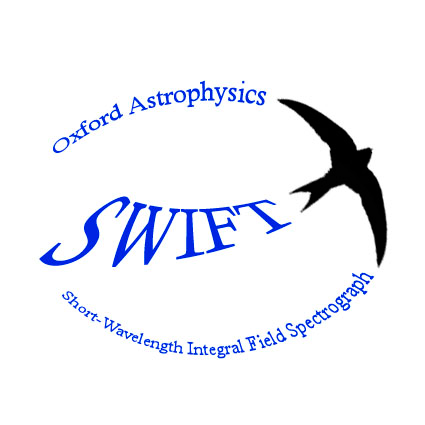
|
The Oxford SWIFT Spectrograph |

|
||
The SWIFT Data Reduction PipelineThe Oxford SWIFT spectrograph has a dedicated pipeline for the reduction of SWIFT data. The pipeline removes the instrumental signature from the raw data and reformats it in a user friendly way, producing a data cube amenable to further analysis using standard data cube handling tools.
swift.iraf.1.5.0 - Latest version of the SWIFT IRAF pipeline (tarball, 17MB) The manual / cookbook for using the pipeline is included in the tarball, but can also be found here. Fast cube combination: combine.py is a python recipe contributed by Azin Khan (summer intern) that efficiently combines cubes using python. To use this recipe, copy all the files in this gzipped tar archive over to the working directory (or python library) and then call it as Data reduction primer: slides (10.7 MB) from a talk by Ryan Houghton (the author of the SWIFT pipeline) on the basic principles of the SWIFT data reduction pipeline Worked example: Worked example provided by Ryan Houghton that works through the pipeline reduction of a data set observed at the coarsest spaxel scale (235 mas per spaxel). To fully utilise this resource, you will also need Data Files for the Worked Example (377MB!!) Last updated: 7 July 2014
|
||||
| Site © 2013, The University of Oxford Physics Department. Comments about this website: email n.thatte1@physics.ox.ac.uk. | ||||
